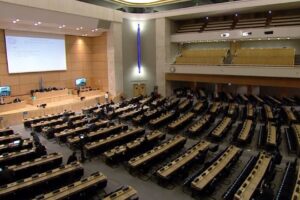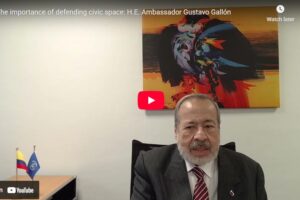Year: 2009 (Date of Decision: 3 December, 2009)
Forum, Country: Court of Appeals, United States of America
Standards, Rights: Right to free exercise of religion; Rights to water and sanitation; Right to adequate housing; Right to health; Indigenous people
Summary Background: The plaintiff appellants comprised the South Fork Band Council of Western Shoshone Nevada and other tribes and organizations (“the Tribes”). The Tribes sought an emergency injunction regarding the approval of a gold mining project by the US Department of Interior and its Bureau of Land Management (“BLM”) located in a sacred site. The project involved ten years of mining and up to three years of ore processing, and would allegedly create a “substantial burden to the exercise of religion.” Domestic law prohibits governmental entities from imposing such burdens unless the government can show that the practice is in furtherance of a “compelling governmental interest” and is the “least restrictive means” of furthering that interest (US Code §2000bb-1). The injunction was denied by the Federal District Court. The appellants alleged violations of the Federal Land Policy Management Act (“FLPMA”) and the National Environmental Policy Act (“NEPA”) and sought an injunction to be granted on appeal.
Holding: To be granted injunctive relief, the Court required that the appellants demonstrate they were likely to “suffer irreparable harm” if a preliminary injunction were denied, that the balance of equities tipped in their favour and that an injunction was in the public interest [para. 14]. In addition, it was necessary to show the BLM’s actions were either arbitrary and capricious or contrary to law [p. 15828].
While the Court declined to find that the appellants had demonstrated the likelihood of success for their FLPMA claims given the in-depth Environmental Impact Statement undertaken by the respondents in consultation with the Tribes and public over a two-year period, it did grant an injunction regarding the NEPA actions to allow a study that adequately considered the environmental impact of “millions of tons of refractory ore,” the adverse impact on local springs and streams, and the extent of fine particulate emissions [pp. 15828 and 15831-15840].
Additional Comments: This case is relevant to the broader framework of issues raised by international human rights bodies condemning the failure of US federal policy to protect Indian land rights and environmental law (see, for instance, the western Shoshone petition to the UN Committee on the Elimination of Racial Discrimination (2006) and the Inter-American Commission on Human Rights (2002).)
Link to Full Case: http://cdn.ca9.uscourts.gov/datastore/opinions/2009/12/03/09-15230.pdf




